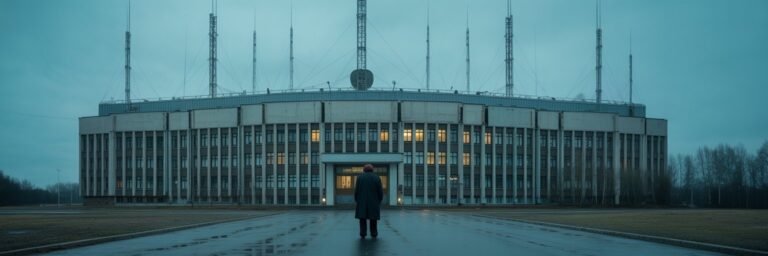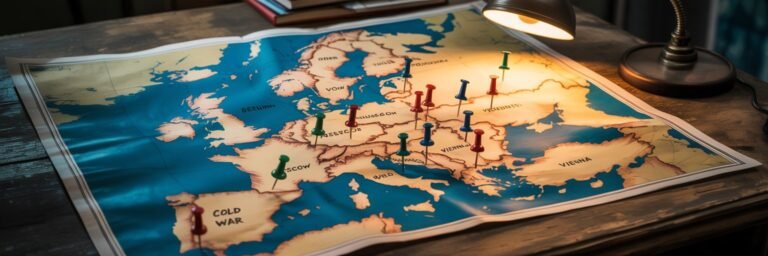INTRODUCTION
The Cold War, a geopolitical conflict that shaped and transformed the world in the second half of the 20th century, was a war of ideologies played out on numerous fronts. Although it was named ‘cold’ because it did not involve direct, conventional warfare between the principal actors – the United States and the Soviet Union – it was anything but in the numerous proxy wars fought under its cover. While the aftershocks of this conflict continue to reverberate through today’s geopolitical landscape, the Cold War also shaped societies both in its participants and onlookers in profound ways, leaving an indelible impact on culture, technology, economics, and politics that are still visible in modern societies.
HISTORICAL BACKGROUND
The roots of the Cold War can be traced back to the ideological conflict between the capitalist West and communist East following World War II. With the Allied victory in 1945, Europe was bifurcated along ideological lines, with the East under Soviet influence and the West under American and British. The Marshall Plan of 1948 that sought to rebuild Western Europe, the establishment of NATO, and the Soviet’s Berlin Blockade and the subsequent formation of the Warsaw Pact, marked significant events that deepened the widening chasm between the two blocs.
Intimidation, propaganda, spying, and opposing alliances – all were part of the game, just short of a full-scale war. In various theaters, crisis after crisis – the Korean War, the Vietnam War, the Cuban Missile Crisis – played out, threatening to plunge the world into nuclear catastrophe.
THEORIES AND INTERPRETATIONS
Traditionally, there have been three main schools interpreting the causes behind the Cold War. The Orthodox or traditionalist narrative, upheld mostly by American scholars in its early years, blamed Soviet expansionism and Stalin’s appetite for control. In contrast, the revisionists, beginning to emerge in the 1960s, argued that the U.S, with its quest for open markets and capitalistic dominance, instigated the tension. Post-revisionists, emerging in the 1970s, sought a middle ground, holding both parties equally culpitable for misunderstanding and misjudging each other’s security concerns after World War II.
Less known is the constructivist interpretation of the Cold War. This school sees the conflict not just about power or economics but a clash of identities. It emphasizes how each bloc came to define its identity in opposition to the other, perpetuating a cycle of enmity and extreme ‘othering’ of the opponent.
MYSTERIES AND CONTROVERSIES
While the mainstream narrative looks at the Cold War as a conflict between the US and Soviet Union, one of the contested theories, penned by historian Michael Cox, instead asserts that it’s more accurate to see it as a series of local and regional conflicts, often with indigenous roots, exacerbated by superpower involvement.
Another controversy is the role and impact of nuclear weapons during the Cold War. While some argue that the threat of ‘Mutually Assured Destruction’ deterred a fully-fledged war, others claim it only increased the risk and consequences of any potential conflict.
SYMBOLISM AND CULTURAL SIGNIFICANCE
Among the enduring symbols of the Cold War stand the Berlin Wall, representing the separating iron curtain. The nuclear arms race evoked a climate of fear, propagating ‘duck and cover’ exercises among schoolchildren. The Space Race, the technological competition between the US and the USSR, gave us Sputnik and the Apollo moon landing, cementing not only the association of technological prowess with national prestige but also expanding human imagination about the confines of our universe.
From the motifs of George Orwell’s 1984 to the grim post-apocalyptic worlds painted in Hollywood movies, the Cold War also deeply impacted and shaped popular culture. The spy genre of literature and cinema, best embodied in the figure of James Bond, is a direct product of the era.
MODERN INVESTIGATIONS
Contemporary studies in Cold War history have taken a ‘global turn,’ attempting to move beyond the dominant Euro-American narrative to include voices, experiences and impacts of the Cold War in the Third World. Historians like Odd Arne Westad and Chen Jian are part of a growing scholarly trend interrogating the effects of proxy wars, decolonization, and non-aligned movements during the Cold War in shaping the current globe’s geopolitical landscape.
Interestingly, in recent years, there has been a surge in investigations into the environmental impact of the Cold War. Studies are exploring the lasting damages caused by nuclear testing, chemical weapon productions, and resource exploitation – a grim legacy indeed.
LEGACY AND CONCLUSION
The end of the Cold War did not mean the demise of its impacts. The geographies of present-day conflicts have their roots in the Cold War, from the Middle East to Afghanistan. The unraveling and reshaping of national boundaries, previously described by Churchill as the ‘Iron Curtain’, are part of the Cold War’s consequences.
Economically, the influence of the Cold War is widespread. The IMF, World Bank, and the capitalist global economy – institutions and structures we take for granted today – were largely a result of the post-World War II decisions, with the legacy extending through the Cold War years.
Inherently linked is the impact on our societies – on the politics of fear, national security narratives, or even individual and collective identities. The evolving narrative of ‘us versus them,’ often codified in societal norms and behavioral expectations, finds its roots deeply buried in the ideological showdown that was the Cold War.
The Cold War may seem like a historical epoch, but shining a light on the present reveals shadows cast by this prolonged instance of ideological contention. Understanding the resonance of this titanic struggle is vital to comprehend its legacy that continues to shape our world, both visible and invisible. From the geographical and political borders defining our world to our individual and collective identities, the echoes of the Cold War remain strikingly relevant, serving as a crucial compass to navigate our current global maze.






